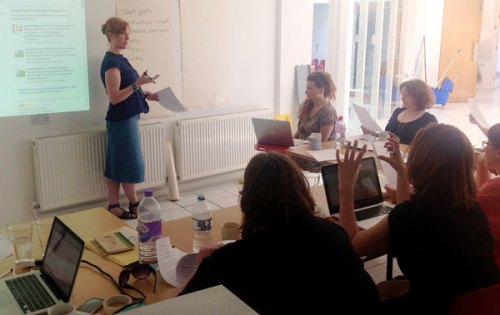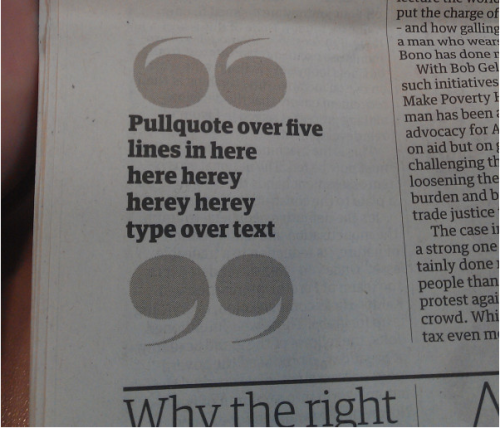While this blog is predominantly for and about sub-editors in journalism, my second guest blogger is interesting because she applies her writing and editing skills in a much broader range of markets. Liz Broomfield set up LibroEditing, a proof-reading, editing and writing business in 2009. Here she passes on some hard-earned advice on going freelance to anyone thinking of taking the plunge.
 Two years ago, I decided to set up my own business offering (initially) proofreading and editing services based in the UK. While I’m not an expert on the business side, I have been through those beginning stages, the launch phase and how it works once you’ve started. Here’s what I’ve learnt…
Two years ago, I decided to set up my own business offering (initially) proofreading and editing services based in the UK. While I’m not an expert on the business side, I have been through those beginning stages, the launch phase and how it works once you’ve started. Here’s what I’ve learnt…
1. BEFORE YOU START
There are quite a few things to ask yourself before you launch a freelance career, for example:
• Do I have useful skills people are prepared to pay for? If you’re already an editor, then yes, you may well have. I had done a fair bit of editing and writing in various jobs, but it didn’t strike me how many different things I could offer until I was running the business. I could have offered more from the start.
• Is there a market for my particular skills, and can I access it? Do you have contacts or colleagues who can help you find freelance work? Think about specialist skills you might have; for example, I have experience working for the UK office of an American company, so I’m able to offer localisation services changing US into UK English and vice versa.
• Can I work from home in isolation? Are you a self-starter who can motivate yourself? If you need people around you, co-working spaces might be an option.
• Can the rest of my life take it? This is really important if you’re thinking of starting your own business while still working. I’ve done that, and there have been times when I’ve had so much of my own work that I’ve had to put off friends, tell my partner he can sit quietly in the corner of my study if he wants to spend time with me, and give up reading for pleasure. Can your social and family life take this?
2. GETTING SET UP
Once you’ve decided to set up on your own, consider the following:
• Online presence. Buy a suitable domain name and set up a web page and email addresses using it. You’ll look more professional and it’s a place to market your work.
• Keeping records. Go on the HMRC course “Becoming self-employed” (or find information in your local library). This will tell you what records to keep so you can do your tax return.
• Register as self-employed. You have to register with HMRC within a certain period after you start working and being paid for it. Phone them up or look on the website – I have found their staff to be really nice and helpful.
• Certificate of Small Earnings Exception. This allows you to earn a certain amount before paying National Insurance and tax so it can be worth registering for this if your freelance income is likely to be minimal at first.
• Business cards. At first you can use somewhere inexpensive like Vistaprint but it’s important to have something to give out to potential clients.
3. ONCE YOU’RE WORKING FOR YOURSELF
If you’ve made it this far, here are my tips for staying on track.
• Prioritising your time is key. Make sure you have time for work, other people and yourself. If you work all hours, you’ll run yourself into the ground. And if you are likely to end up doing lots of little projects…
• Organise your work. I set up a Gantt chart on a spreadsheet – clients down, dates along; then colour in dates that projects are booked in for, when they arrive, when you’ve invoiced, when they’ve been paid.
• Efficient invoicing. Make sure you invoice clients right away after you’ve done the job. Or before, if you work that way round. There’s software you can buy, or you can just set up a Word template.
• Use good tools. Make sure you have up-to-date and legitimate versions of the software you need: Word, InDesign, etc. If you will be editing PDFs, there are free downloads of software that will let you annotate them. If you do transcriptions, again, you can find free software.
• Work for your clients, not yourself. My student customers need me to show edits using Word’s ‘track changes’ function, which enables them to make the decisions on what to change and also means I’m not writing their work for them. Not all clients want this; others just want me to rewrite and send it back to them. Offer them choices but be prepared to make recommendations, too.
• Be flexible and open. I started off as an editor and proofreader. Now I’m also a transcriber, copy typist, writer and localiser. More income streams equals more work.
• Network widely. Try to connect with your peers in the business and other freelancers who work from home, as well as businesspeople in your area. Twitter and Facebook are your friends for finding out what’s going on and networking gets you out of the house and meeting people.
• Know when to outsource. If a task is going to take longer in terms of hours and cost more in terms of work you have to turn down, outsource it. Could someone else transcribe your interview recordings or research, or do your bookkeeping each month, for example?
I hope you find this advice useful. It’s certainly helped me find my way into a happy and rewarding new career, and as someone who didn’t think she was a natural entrepreneur, going freelance has given me more confidence and a wider skill set.
Liz Broomfield runs LibroEditing, a proof-reading, editing and writing business based in Birmingham, UK. For more information see www.libroediting.com or email her at liz@libroediting.com – she also offers transcription and typing services.
ends



 Two years ago, I decided to set up my own business offering (initially) proofreading and editing services based in the UK. While I’m not an expert on the business side, I have been through those beginning stages, the launch phase and how it works once you’ve started. Here’s what I’ve learnt…
Two years ago, I decided to set up my own business offering (initially) proofreading and editing services based in the UK. While I’m not an expert on the business side, I have been through those beginning stages, the launch phase and how it works once you’ve started. Here’s what I’ve learnt…


Rates for the job – will they drop even further?
Today on a London freelance subs group/forum I belong to, a row broke out about sub-editor day rates. A well-known music magazine posted a temporary contract, offering a rate of £110 a day. This was followed by general admonishment as the standard day rate is around £130 (and has been unhappily stuck at this level for about a decade).
Unusually, no one spoke up in favour of the contract/rate – normally there is at least one person arguing the defence.
The outraged subs, quite rightly, made sure not to blame the poster but wanted him to communicate that the rate was unacceptably low and suggested that their response be passed up the line to the budget-holders. They also called out for other subs in the group not to accept the rate.
But it is a slim hope.
There is no longer a strong union in journalism and there is no real solidarity over freelance rates.
The bottom line is that some out-of-work freelancer probably snapped up the low-paid contract soon after posting. After all, some work is better than none at all. Food on the table over morals, and all that.
The standard response to these low-rate employment deals is: ‘If you pay peanuts, you get monkeys.’ Which is probably true although it’s cold comfort in a self-employed world.
Perhaps media companies are cynically testing the water with lower rates – after all, they are not in business to play fair. Or perhaps they are dealing their own budget pressures – a classic print music magazine is surely facing both falling circulation and shrinking ad revenues.
I’m not trying to sort out the rights and wrongs of today’s rates storm. I’m just wondering where it is all leading. I find myself asking:
Like rising and falling share prices, there seems to be an upper and lower resistance level to subbing day rates. Today the lower level was breached at £110. But like falling shares in a financial crisis, I worry that this resistance may give way to further falls. We’re not in Kansas anymore.
I don’t know the answers.
Two of the reasons I moved into web editing from sub-editing were the slump in demand for freelance print subs circa 2008 and a rise in the number of awkward situations where I was competing with my long-time subbing friends for work.
I’m happy that traditional market forces are in play for digital content work. There are currently not enough skilled people to service the new world in which everyone is a publisher. (More on that in a post I edited for a content recruiter’s blog on content growth areas and talent shortages: Europe in crisis but digital jobs remain a bright spot.)
All I know is that, when I started freelance subbing in 1989, the rate on my local paper was £65 a day. This jumped up to £110 for consumer mags in 1992, and then plateaued for many years, before rising to £130 around 2000. It’s been stuck there as a base rate ever since.
And this is a freelance rate – with no employee benefits or holiday pay (unless you’re booked on a long contract).
It’s no wonder experienced subs are leaving the profession or are desperate to re-skill and find work in the digital arena.
To this end, I’ve been thinking that there is a workshop in this that I could run to help other freelance subs make the transition. I’ve been working in digital since 2000 and went full-time in 2009. To keep up with the skills, I now train myself each week (using cake – but that’s another story).
I’m also thinking long-term how great would it be to recreate the freelance subs’ community with a connected team of skilled, reliable and readily available freelance digital editors.
If we can find a venue in London (available on a weekend as I live outside of London), and can get a group of up to five subs together, would anyone be interested in attending a low-cost half-day digital skills workshop?
What would you like to know? What are your questions? [Please email me at fionacullinan at hotmail dot com with your details so I can start a list of interested people and find out what they want to learn about.]
It would be great to hear your thoughts.
26 Comments
Posted in Comment, Justify my sub
Tagged freelance, pay, rates